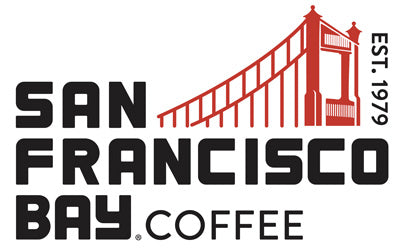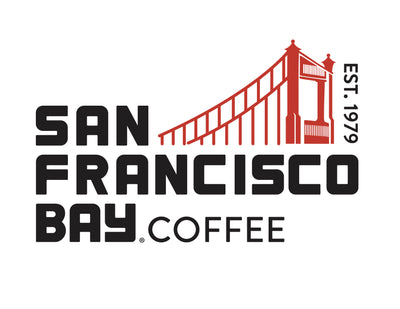Arabica vs Robusta Coffee: Finding the Best Option For You

For coffee lovers, understanding the difference between Arabica and Robusta beans is essential to finding your perfect cup. These two varieties dominate the global coffee market, each bringing unique characteristics to your daily brew. If you're a casual coffee drinker or an aspiring connoisseur, knowing the distinct qualities of each bean type will help you make more informed choices about your coffee selection. Let's explore what makes these beans different and which might be the best choice for your taste preferences.
What is Arabica Coffee?

Arabica coffee (Coffea arabica) is one of the two main species of coffee cultivated worldwide, known for its superior flavor and quality compared to its counterpart, Robusta coffee. Originally native to the highlands of Ethiopia, Arabica coffee grows best at high altitudes between 3,000-6,000 feet.
Arabica makes up about 70% of global coffee production and is used in most high-quality and specialty coffee products. However, it's more expensive to produce because the plants are more susceptible to disease and environmental stress, and they yield fewer beans per plant than Robusta.
Major Arabica-producing regions include Brazil, Colombia, Ethiopia, Honduras, and Guatemala. Different growing regions can produce distinctly different flavor profiles in the beans, which is why coffee origins are often prominently featured on specialty coffee packaging.
What is Robusta Coffee?

Robusta coffee (Coffea canephora) is the second most common species of coffee cultivated worldwide, known for its hardiness, high caffeine content, and stronger, more bitter flavor profile. Originally native to central and western sub-Saharan Africa, Robusta can thrive at lower altitudes and in warmer conditions than Arabica.
Robusta makes up about 30% of global coffee production and is primarily used in instant coffee, some espresso blends for extra body and crema, lower-cost commercial coffee brands, and some Vietnamese coffee preparations.
Major Robusta-producing countries include Vietnam, Brazil, Indonesia, and Uganda. While often considered inferior to Arabica, high-quality Robusta beans are gaining appreciation in specialty coffee circles, particularly for their unique characteristics in espresso blends.
What is the difference between Arabica and Robusta Coffee?
Flavor Profile:
-
Arabica: Sweeter, smoother, with complex flavors including fruit, chocolate, nuts, and berries. Has a wine-like brightness and pleasant acidity. The flavor complexity can vary significantly based on origin, with Ethiopian beans often showing floral notes and Colombian beans known for caramel sweetness.
-
Robusta: Stronger, more bitter, with earthy and woody notes. Often described as having a grain-like or rubbery taste. Higher-quality Robusta can exhibit dark chocolate and rum characteristics, particularly in Vietnamese coffee preparations.
Caffeine Content:
-

Arabica: Lower (around 1.5%), which contributes to its smoother, less bitter taste
-
Robusta: Higher (around 2.7%), making it popular for strong espresso blends and energy-focused coffee drinks
Growing Conditions:
-
Arabica: More demanding, requires high altitudes (3,000-6,000 feet), cooler temperatures, and specific soil conditions. Needs consistent rainfall and shade protection for optimal growth
-
Robusta: Hardier, can grow at lower altitudes (0-2,000 feet), more tolerant of heat and varying conditions. Can withstand direct sunlight and irregular rainfall patterns
Plant Characteristics:
-
Arabica: More delicate, disease-prone, lower yield per plant. Takes longer to produce the first crop (3-5 years)
-
Robusta: More resistant to disease and pests, higher yield per plant. Generally produces first crop faster (2-3 years)
Bean Shape:
-
Arabica: Oval-shaped with an S-shaped groove, generally larger beans
-
Robusta: Rounder and smaller than Arabica, with a straighter groove
Price and Market Position:
-
Arabica: Generally more expensive, used in specialty coffee and high-end brands. Comprises about 60-70% of global production
-
Robusta: Less expensive, commonly used in instant coffee and commercial blends. Makes up 30-40% of global production
Common Uses:
-
Arabica: Premium coffee drinks, pour-overs, drip coffee, single-origin offerings
-
Robusta: Instant coffee, espresso blends (for crema), commercial coffee blends, traditional Vietnamese coffee
Chemical Composition:
-
Arabica: Higher in lipids and sugars, which contribute to better flavor. Contains more complex aromatic compounds
-
Robusta: Higher in chlorogenic acids and oil content, which create more crema in espresso and contribute to its stronger taste

Major Producing Regions:
-
Arabica: Brazil, Colombia, Ethiopia, Honduras, Guatemala, Peru, and Costa Rica
-
Robusta: Vietnam, Brazil, Indonesia, Uganda, and India, with Vietnam producing about 40% of the world's Robusta
Choosing Between Arabica vs. Robusta Coffee
The choice between Arabica and Robusta ultimately comes down to your personal preferences and how you plan to enjoy your coffee. If you value complex, nuanced flavors, Arabica beans are likely your best choice. They're particularly well-suited for pour-overs, drip coffee, and specialty drinks where the bean's subtle characteristics can shine.
At San Francisco Bay Coffee, we've chosen to focus exclusively on premium Arabica beans sourced from the world's finest growing regions. Our commitment to quality ensures that every cup delivers the smooth, complex flavors that make Arabica coffee so beloved by coffee enthusiasts.
Explore Our Premium Arabica Collection Today



